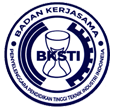A Tapped Density Taguchi Optimization for Orange Peel Particulate Green Fillers
Abstract
Transportation of green fillers for composites has serious densification implications due to particulate shape irregularities and size distributions. To date, few scientific studies are available on the tapped density measurements of orange peel particulate fillers. In this work, experiments were conducted on the tapped density of orange peel particulates in gentle and successive taps to the measuring cylinder containing the particulate matter. Taguchi's technique of "smaller-the-better" quality characteristics used in measuring the signal-to-noise (S/N) ratio was applied to determine the optimal setting of the tapped density process parameters. Within a range of taps from 1 to 48 points, all tapped points showed that 0.425mm OPP has a higher average apparent density of 3.22g/cm2 than 0.600mm (i.e. 3.189g/cm3) except for points at 8, 28 and 32 taps. Furthermore, for the 0.600mm OPP, its average tapped density improved by 6.97% compared to its average apparent density. Moreover, it was found that the Taguchi optimal setting for the tapped density of OPP given was A1B1C1, which reads as 8.727 number of taps, a tapped density of 4.433 and 4.395g/cm3, respectively, for the 0.425 and 0.600mm OPP samples sizes. This means that the required number of taps to obtain OPPs with light density and structural integrity to meet improved composite variety demands would be 8.727 taps, while a tapped density of 4.433 and 4.395g/cm3 is required for the 0.425 and 0.600mm OPP sizes. Hence, the number of taps was the tapped density parameter that had the greatest effect on the S/N ratios of the tapped filler materials. The results are of immense benefit to composite design engineers and equipment manufacturers for behavioural simulation and testing purposes.
Keywords
Full Text:
PDFReferences
Aigbodion V.S., Atuanya C.U., Igogori E.A. and Ihom P., 2013, Development of high-density polyethylene/ orange peels particulate bio-composite, Gazi University Journal of Science, Vol. 26, No. 1, pp. 107-117.
Ajibade, O.A., Agunsoye, J.O. and Oke, S.A. 2015a, Experimentation and prediction of moisture characteristics and density of sweet orange peels used for epoxy-based composite fabrication, Journal of The Association of Professional Engineers of Trinidad and Tobago, Vol.43, No.2, pp.44-52.
Ajibade, O.A., Agunsoye, J.O. and Oke, S.A., 2015b. Analysis of the free-swell behaviour of orange peel particulates as reinforcement for green composite fabrication, Acta Periodica Technologica, Vol. 46, pp. 131-147
Ajibade, O.A., Agunsoye, J.O. and Oke, S.A., 2016. A grey relational analytical approach to orange peel filler particulates for tapped density experiments of green composite reinforcements, KKU Engineering Journal, Vol. 43, No. 3, pp. 108-119
Ajibade, O.A., Agunsoye, J.O. and Oke, S.A., 2017, Optimisation of water absorption properties of orange peel particulate-based epoxy composite using grey relational analysis, West Indies Journal of Engineering, Vol. 39, No. 2, pp. 25-35
Ajibade O.A., Agunsoye J.O., Oke S.A. 2021, Taguchi method and Taguchi-Pareto scheme to evaluate diffusivity during the development of orange peel epoxy composites, Journal of Applied Science & Process Engineering, Vol. 8, No. 1, pp. 765-785
Ajibade O.A., Agunsoye J.O., Oke S.A. 2022, An optimization of moisture losses and drying properties of orange peel reinforcement for composite fabrication using the Taguchi method, Engineering Access, Vol. 8, No. 1, pp. 84-95. https://doi.org/10.14456/mijet.2022.12
Apeji Y.E., Oyi A.R., and Musa H., 2011. Formulation and evaluation of ascorbic acid tablets by direct compression using microcrystalline starch as a direct compression excipient, International Journal of Health Research, Vol. 4, No. 3, pp. 111-106.
Balti S., Boudenne A., Dammak L., Handi N., 2023, Mechanical and thermophysical characterization of gypsum composites reinforced by different wastes for green building applications, construction and Building Materials, Vol. 372, Article 130840. https://doi.org/10.1016/j.conbuildmat.2023.130840
Barile C. Casavola C., Pappalettera G., Pappalettere C., Vimalathitham P.K., 2019, Investigation of structural Integrity of Composites Materials using wavelet packet transform, Procedia Structural Integrity, vol. 17, pp. 582-588. https://doi.org/10.1016/j.prostr.2019.08.078
Bayor M.T., Tuffour E., and Lambon P.S., 2013. Evaluation of starch from new sweet potato genotypes for use as a pharmaceutical diluent, binder or disintegrant, Journal of Applied Pharmaceutical Science, Vol., 3, pp. S17-S23. https://doi.org/10.7324/JAPS.2013.38.S4
Beltran J.R., Pino S., 2023, A numerical approach to bound the asymmetrical surface-damage metallic strands response accounting for bending stiffness nonlinearity: Damage and structural integrity evaluation purposes, Structures, Vol. 55, pp. 606-625. https://doi.org/10.1016/j.istruc.2023.06.038
Bradu P., Biswas A., Nair C., Sreevalsakumar S., Patil M., Kannampuzha S., Mukherjee A. G., Wanjari U. R., Renu K., Vellingiri G., Gopalakrishnan A. V., 2022, Recent advances in green technology and industrial revolution 4.0 for a sustainable future, Environmental Science and Pollution Research. https://doi.org/10.1007/S11356-022-20024-4
Chevanan N., Womac A.R., and Bitra V.s., 2008. Loose-filled and tapped densities of chopped switchgrass, corn stover and wheat straw, ASABE Annual International Meeting, Rhode Island Convention Centre, Providence, Rhode Island.
Ghosh A., and Chatterjee S., 2014. Effect of Al2O3 content and process variables on structure and properties of Al-Al2O3 compacts, Journal of Minerals and Materials Characterization and Engineering, No. 2, pp. 121-128. https://doi.org/10.4236/jmmce.2014.22016
Govedarica B., Injac R., Dreu R., and Srcic S., 2011. Formulation and evaluation of immediate release tablets with different types of paracetamol powders prepared by direct compression, African Journal of Pharmacy and Pharmacology, Vol. 5, No. 1, pp. 31-41. https://doi.org/10.5897/AJPP10.274
Jamwal V., Mittal A., Dhaundival A., 2023, Valorization of agro-industrial waste in composite films for sustainable packaging applications, Materials Today: Proceedings. https://doi.org/10.1016/j.mtpr.2023.08.042
Kumar S.T., 2012. Mechanical behaviour of orange peel reinforced epoxy composite, Unpublished B. Tech Project, Department of Mechanical Engineering, National Institute of Technology, Rourkela, India.
La Mantia F.P. and Morreale M., 2011. Green composites: A brief review, Composites Part A: Applied Science and Manufacturing, Vol. 42, No. 6, pp. 579-588. https://doi.org/10.1016/j.compositesa.2011.01.017
Lin D., Lu Z., Hsu P., Hye R.L., Nian L., Jie Z., Haotian W., Chong L., and Yi C., 2015. A high tap density secondary silicon particle anode fabricated by scalable mechanical pressing for lithium-ion batteries, Royal Society of Chemistry, Energy and Environmental Science, Vol. 8, pp. 2371-2376. https://doi.org/10.1039/C5EE01363A
Mohanty A.K., Misra M., and Drzal L.T., 2002. Sustainable bio-composites from renewable resources: Opportunities and challenges in the green materials world, Journal of Polymers and the Environment, Vol. 10, No. 1/2, pp. 19-26. https://doi.org/10.1023/A:1021013921916
Minne A., Boireau H., Horta M.J., and Vanbeuer R., 2008. Optimisation of the aerosolization properties of an inhalation dry powder based on selection of excipients, European Journal of Pharmaceutics and Biopharmaceutics. Vol. 70, No. 3, pp. 839-844. https://doi.org/10.1016/j.ejpb.2008.06.013
Nath A. Ray A, Ray K. K., 2023, Analyses of the model parameters of kinematic isotropic hardening rule using genetic algorithm approach for predicting cyclic-plasticity of metallic structural materials, Procedia Structural Integrity, Vol. 43, pp. 246-251. https://doi.org/10.1016/j.prostr.2022.12.266
Nwobi B.E., Ofoegbu O., and Adesina O.B., 2006. Extraction and qualitative assessment of African sweet orange seed oil, African Journal of Food Agriculture Nutrition and Development, Vol. 6, No. 2, pp.1-11. https://doi.org/10.4314/ajfand.v6i2.71747
Ojha S., Raghavendra G., Acharya S.K. and Kumar P., 2012. Fabrication and study of mechanical properties of orange peel reinforced polymer composite, Caspian Journal of Applied Sciences Research, Vol.1, No. 13, pp. 190-194.
Pino J., Sanchez M., Sanchez R., and Rocal E., 2006. Chemical composition of orange oil concentrates, Nahrung/Food, Vol. 36, No. 6, pp. 539-542.
Shah I.G., Ely K.J., and Stagner W.C., 2015. Effect of tapped density, compacted density, and drug concentration on light-induced fluorescence response as a process analytical tool, Journal of Pharmaceutical Sciences, Vol. 104, No.5, pp. 1732-1740. https://doi.org/10.1002/jps.24386
Vora J.D., Matthews R. F., Crandall P.G. and Cook R., 1983. Preparation and chemical composition of orange oil concentrates, Journal of Food Science, Vol. 48, No. 4, pp.1197. https://doi.org/10.1111/j.1365-2621.1983.tb09190.x
Verzera A., Trozzi A., Dugo G., Di Bella G., Cotroneo A., 2004. Biological lemon and sweet orange essential oil composition, Flavour and Fragrance Journal, Vol. 19, No. 6, pp. 544-548. https://doi.org/10.1002/ffj.1348
Wang Z., Subramanian N., Gunasekaran A., Abdulrahman M.D., Liu C., 2015 Composite sustainable manufacturing practice and performance framework: Chinese auto-parts suppliers perspective, International Journal of Production Economics, Vol. 170, pp. 219-233. https://doi.org/10.1016/j-ijpe.2015.09.035
Wei W., Dezhi C., Ruining W. and Lin G., 2012. Hierarchical LiFEPO4/C microspheres with high tap density assembled by nanosheets as cathode materials for high-performance Li-ion batteries, Nanotechnology, Vol.23, No. 47. https://doi.org/10.1088/0957-4484/23/47/475401
Xiao J., Wang J., Liu Y., Li J., Li Y., 2006. Preparation of spherical cobalt carbonate powder with high tap density, Journal of Central South University of Technology, Vol. 13, No. 6, pp. 642-646. https://doi.org/10.1007/s11771-006-0008-6
Yang S., Wang X., Yang X., Liu Z., Wei Q., and Shu H., 2012. High tap density spherical Li[Ni0.5Mn0.3Co0.2]O2 cathode material synthesized via continuous hydroxide co-precipitation method for advanced Lithium-ion batteries, International Journal of Electrochemistry, Article ID 323560, https://doi.org/10.1155/2012/323560
Yeoh S., Shi J., Langrish T.A.G., 2008. Comparison between different techniques for water-based extraction of pectin from orange peels, Desalination, Vol. 218, pp. 229-237. https://doi.org/10.1016/j.desal.2007.02.018
Zareh B., Gorji A.H., Bakhshi M., and Nourouzi S., 2012. Study on the effect of forming parameters in sheet hydrodynamic deep drawing using FEM-based Taguchi method, International Journal of Advanced Design and Manufacturing Technology, Vol.6, No. 1, pp. 87-99.
Zhang Y., Shen G., Lam S.S., Ansar S., Jung S.-C., Ge S., Hou L., Fan Z., Wang F., Fan W., 2023, A waste textiles-based multilayer composite fabric with superior electromagnetic shielding, infrared stealth and flame retardance for military applications, Chemical Engineering Journal, Vol. 471, Article 144679. https://doi.org/10.1016/j.ccej.2023.144679
DOI: http://dx.doi.org/10.22441/ijiem.v5i2.22415
Refbacks
- There are currently no refbacks.

This work is licensed under a Creative Commons Attribution-NonCommercial 4.0 International License.
IJIEM - Indonesian Journal of Industrial Engineering & Management
Program Pascasarjana Magister Teknik Industri Universitas Mercu Buana
Kampus Menteng - Gedung Tedja Buana, Floor 4th
Jl. Menteng Raya No. 29 Jakarta Pusat- Indonesia
Tlp.: +62 21 31935454 Fax: +62 21 31934474
http://publikasi.mercubuana.ac.id/index.php/ijiem
Email: [email protected]

This work is licensed under a Creative Commons Attribution-NonCommercial 4.0 International License.
The journal is indexed by:






1.png)
.png)
.png)
.png)







